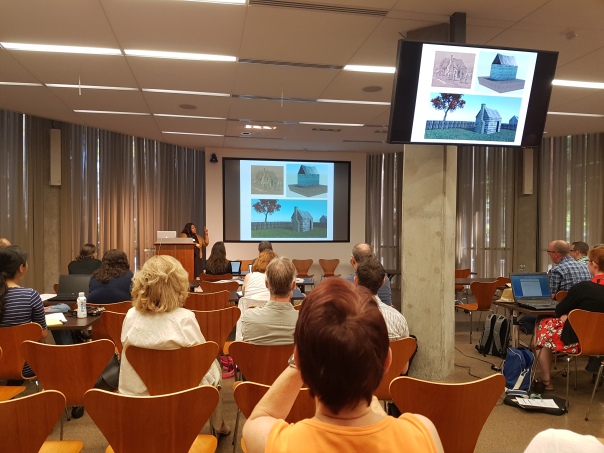Metadata
Are there recent advancements and agreements in the design use and sharing of metadata for Virtual Heritage? Recent modifications of CIDOC-CRM and Dublin Core particularly for 3D Heritage Models would be appreciated. CARARE version 2 is pubically available and there are various papers on the topic but I have not found any large-scale agreement and deployment of any scheme that focuses on 3D Virtual Heritage.
Because in 2007 and 2011, Laia Tost and I suggested virtual heritage projects should be based on: care, accuracy, sensitivity, effective and inspirational pedagogical features, is collaborative and evaluation-orientated. Extrapolating from these aims, I suggest the following features are desirable for designing 3D virtual heritage models or developing an infrastructure that can support virtual heritage models for the purpose of classroom teaching and public dissemination:
- Data accuracy: the level of accuracy and type of data capture method should be associated with the model, as well as the geographical location.
- Format limitations: any known limitations or required conditions due to the digital format or way in which the data was created, should also be associated with the model.
- Provenance: the record of ownership and scholarship and community input should be recorded and accessible (the source and the ownership rights).
- Community protocols: social, cultural and institutional protocols that guide who accesses the sourced cultural heritage and how that should affect the transmission, distribution and dissemination of the digitally simulated model.
- Authenticity: the known, extrapolated, omitted, simplified and imagined areas and components of the model should be identified in some form of thematic (and preferably standardised) schema.
- Cultural presence: models should aim towards explaining the cultural significance of the original site, and give an impression of the situated cultural value of the place as experienced by the original inhabitants.
- Evaluation Data: these aims should be clearly explained and any evaluation data of participants should be linked to (or otherwise associated with) the models.
- Purpose: the generic ways in which original creators and shareholders intended the models could be edited or otherwise modified should be described.
The first three considerations (and possibly all of the others, especially 5: Authenticity) require the careful and appropriate use of metadata.As Wise and Miller (1997) have noted, metadata (‘data about data’), allows users to be informed without having to access the entire body of data, it helps us find information and it helps us to group and link ‘bodies of information’ together. In 2008, Addison proposed the following virtual heritage metadata:
| Type | # | Data Encoding/Format |
| What | i. | HeritageID (a superset of existing WorldHeritageID) |
| | Ii. | Title/brief description |
| | Iii | Heritage Type/Classification (e.g.: cultural: archaeological …) |
| | iv. | Heritage Time Period (e.g.: geologic or historic time) |
| | v. | Heritage Time Span |
| Why | vi. | Purpose (reason recorded/produced) |
| How | vii. | Recording Device Parameters (type, sample rate, precision …) |
| | viii. | Secondary Device(s) (data manipulation) |
| | ix. | Environmental conditions |
| Whom | x. | Submitter and Date of Submission |
| | xi. | Rights given/withheld |
| | xii. | Author/Copyright Holder |
| | xiii. | Sponsor/Funder/Client |
| When | xiv. | Date (of recording, manipulation) |
| Where | xv. | Location (Latitude/Longitude + compass direction if applicable) |
References
ADDISON, A. 2008. The Vanishing Virtual. In: KALAY, Y. E., KVAN, T. & AFFLECK, J. (eds.) New Heritage: New Media and Cultural Heritage. Oxon UK: Routledge.
BENNETT, M. J. 2015. Presentation on Evaluating the Creation and Preservation Challenges of Photogrammetry-based 3D Models.
KULASEKARAN, S., TRELOGAN, J., ESTEVA, M. & JOHNSON, M. Metadata integration for an archaeology collection architecture. Proceedings of the 2014 International Conference on Dublin Core and Metadata Applications, 2014. Dublin Core Metadata Initiative, 53-63.
REINHARD, A. 2013. Publishing Archaeological Linked Open Data: From Steampunk to Sustainability [Online]. Available: http://dlib.nyu.edu/awdl/isaw/isaw-papers/7/reinhard/ [Accessed 23 7].
TOST, L. P. & CHAMPION, E. 2011. Evaluating Presence in Cultural Heritage Projects. International Journal of Heritage Studies, 18, 83-102.
WISE, A. & MILLER, P. 1997. WHY METADATA MATTERS IN ARCHAEOLOGY. Internet Archaeology, Online.





